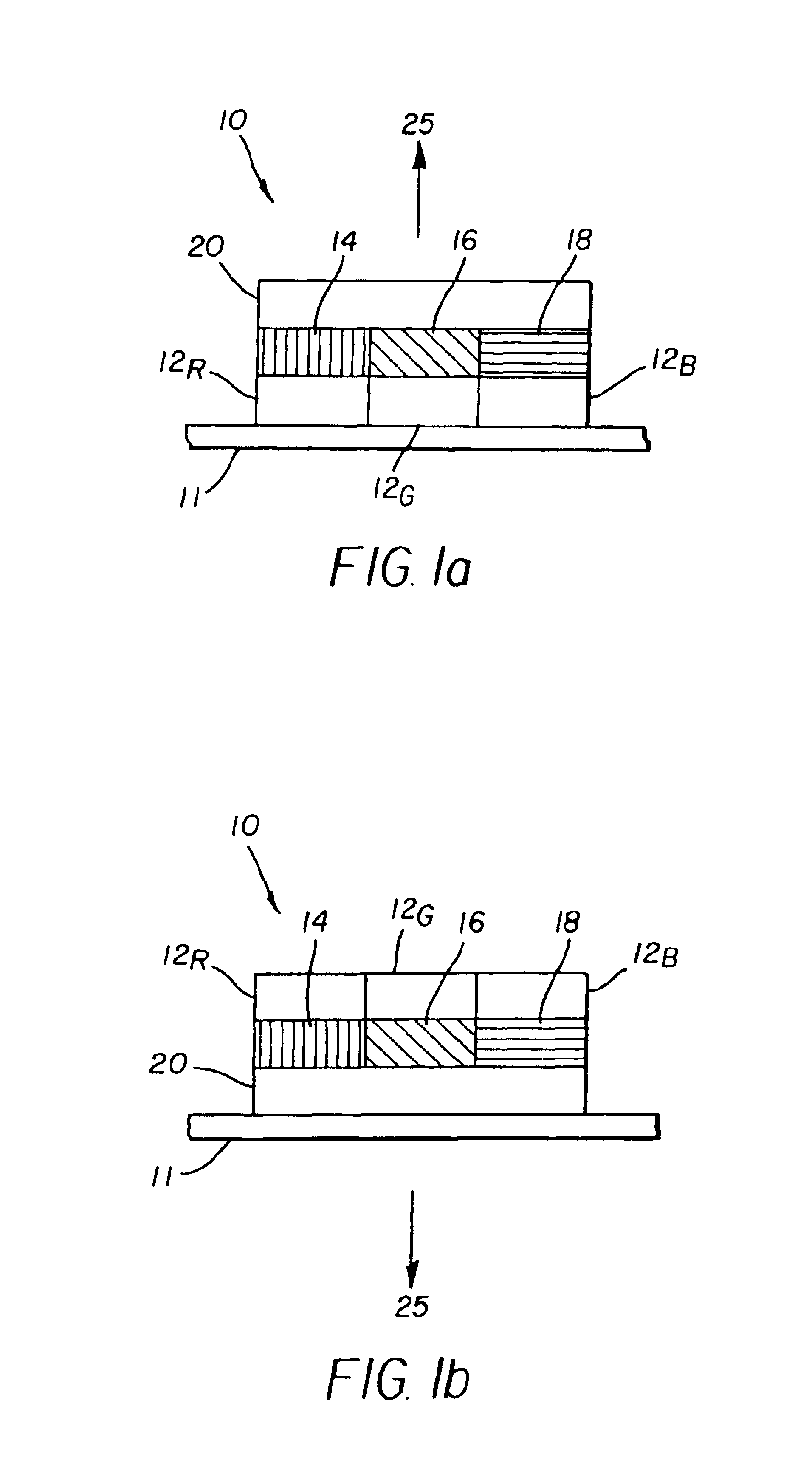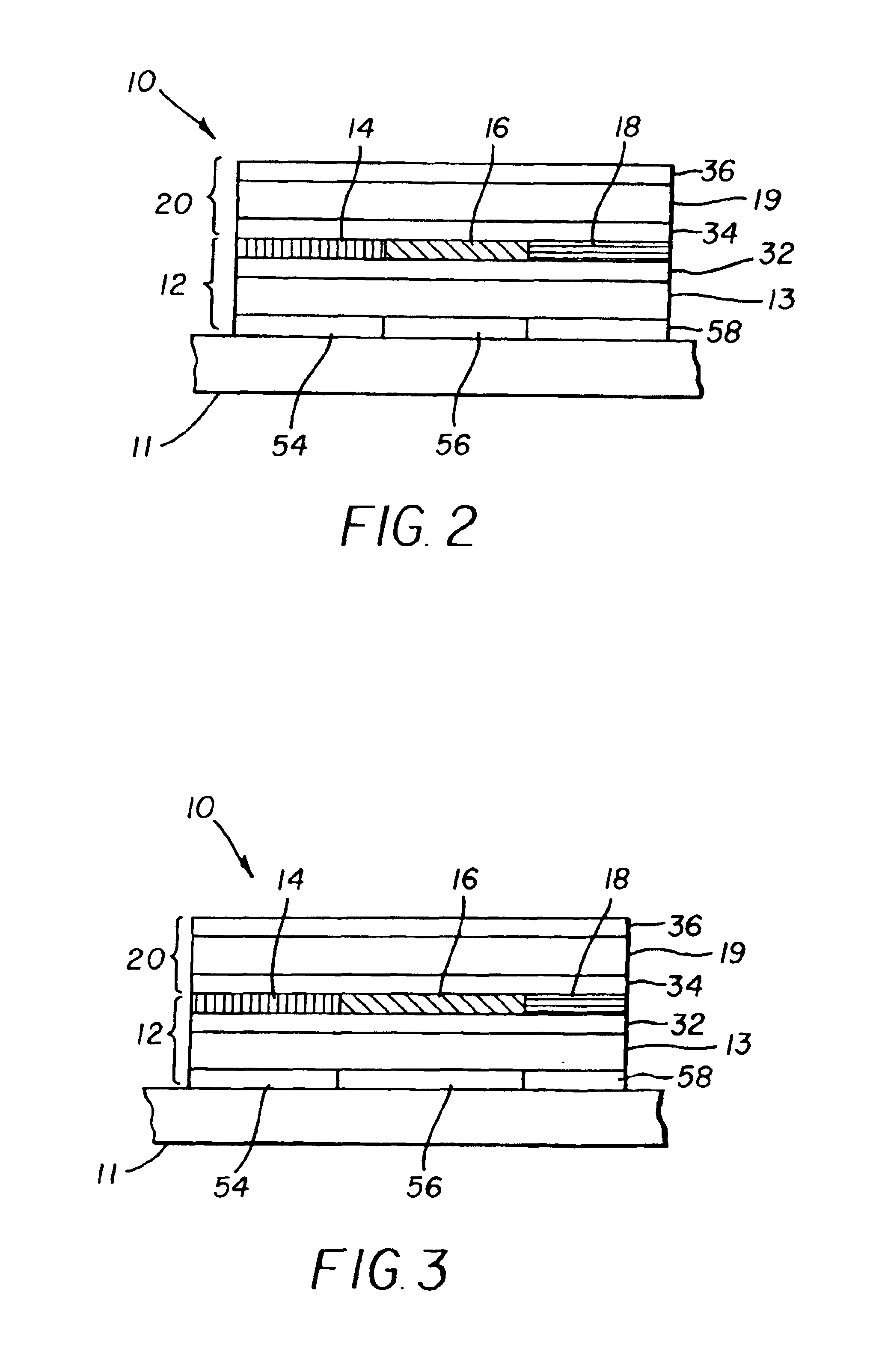Stacked OLED display having improved efficiency
a technology of oled display and efficiency, applied in the field of oled color display, can solve the problems of reducing the life or reducing the resolution compared to a prior art three, reducing the efficiency of pixels in the display, and imai design not providing increased power efficiency for emissive full color display
- Summary
- Abstract
- Description
- Claims
- Application Information
AI Technical Summary
Problems solved by technology
Method used
Image
Examples
Embodiment Construction
[0017]Referring to FIG. 1a, a top emitting OLED device according to the present invention includes a color pixel 10 located on a substrate 11 having a plurality of individually addressable first white light emitting elements 12R, 12G, 12B; a corresponding plurality of color filters 14, 16, and 18 respectively located over the first white light emitting elements 12R, 12G, 12B to emit colored light. A second separately addressable white light emitting element 20 is located over the color filters. It is possible to use a clear (white light) filter (not shown) in conjunction with the color filters to, for example, improve process or materials stability and layer interactions. Suitable filters are known in the art, for example dichroic filters and absorption filters made of dyes or pigments.
[0018]Alternatively, the OLED device may be bottom emitting (as shown in FIG. 1b) wherein the second white light emitting element 20 is on the substrate 11 and light 25 is emitted through the substrat...
PUM
| Property | Measurement | Unit |
|---|---|---|
| Color | aaaaa | aaaaa |
| Size | aaaaa | aaaaa |
| Area | aaaaa | aaaaa |
Abstract
Description
Claims
Application Information
 Login to View More
Login to View More - R&D
- Intellectual Property
- Life Sciences
- Materials
- Tech Scout
- Unparalleled Data Quality
- Higher Quality Content
- 60% Fewer Hallucinations
Browse by: Latest US Patents, China's latest patents, Technical Efficacy Thesaurus, Application Domain, Technology Topic, Popular Technical Reports.
© 2025 PatSnap. All rights reserved.Legal|Privacy policy|Modern Slavery Act Transparency Statement|Sitemap|About US| Contact US: help@patsnap.com



